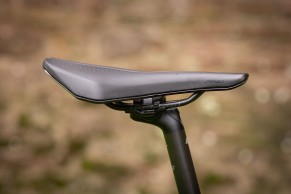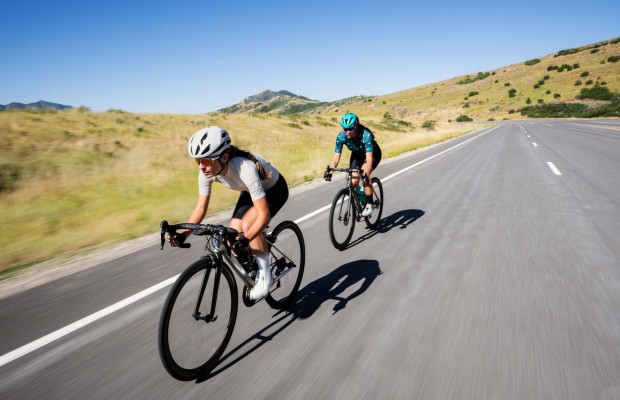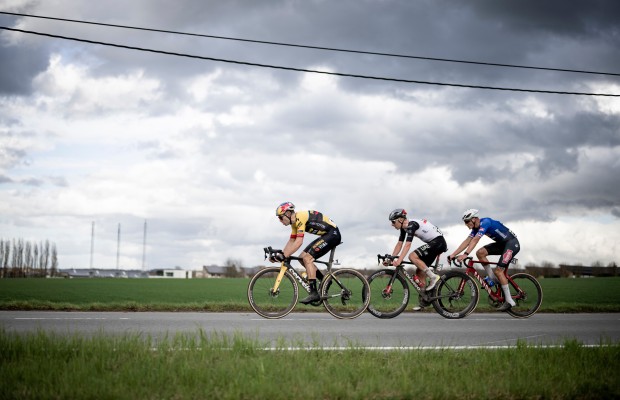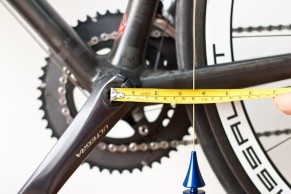The importance of the saddle's setback
It is often a measure that is not usually taken into account when adjusting the bike at home and that many randomly modify as a means to bring the handlebars closer or further away without considering the implications it has on pedaling and bike control. We are talking about the setback of the saddle.

The setback of the saddle and the perfect balance
In the traditional bike adjustment, few took into account the adjustment of the saddle setback beyond the mantra that the knee should be over the pedal axle in the most forward position. However, the setback of the saddle has other implications that are not usually considered and, like all adjustments made on bike measurements, can make the difference between being able to pedal comfortably and without discomfort for hours or turning biking into a torture.
The first thing to consider when adjusting the saddle setback is that it varies the position of the cyclist on the bike along its length. This affects the distribution of weight between the two wheels of the bike. A correct balance in this measure is vital to achieve smooth handling of our machine, especially when facing descents.
RECOMENDADO

Tips for getting up early to ride

Complete list of the highest paid cyclists of 2025

Shimmy Effect: why some bikes become uncontrollable when going downhill

How many calories are burned when cycling

What is heart rate variability and how does it affect the cyclist?

Fat Max Training to efficiently eliminate fat

Too much weight on the rear wheel causes the front wheel to float and lose grip, creating a strong feeling of insecurity in every turn. On the contrary, if we load too much weight on the front, we will have greater grip on this wheel but the excess load can make it difficult to lean the bike into turns, not to mention the constant changes of direction we will have to make when linking them. Additionally, it will result in less traction on the rear wheel if the asphalt is dirty or wet.
The setback of the saddle also has implications on pedaling, potentially causing overloads on the knee tendons if we move away from the vertical when applying the most force. An excess setback also affects the extent to which the hip flexes with each pedal stroke, meaning the leg comes too close to the body. We must consider that when the flexion is excessive, the force of extension that we are able to produce is much lower, thus clearly reducing the efficiency of each pedal stroke at the beginning of the cycle.
Furthermore, when we modify the setback of the saddle, it also changes the position in relation to the handlebars, which can make us too stretched out or put too much weight on the wrists. Fortunately, it is also a measure that allows for a certain margin of tolerance. In any case, the body itself tries to find the ideal position by moving on the saddle to find the best pedaling position, although this often means that if the setback is not properly adjusted, we will not sit correctly on the saddle, resulting in discomfort. In fact, many of the problems that many attribute to the saddle are often caused by this.
Measuring and adjusting
When adjusting the saddle setback, we must consider several parameters. The first and main one is to measure the setback itself. Traditionally, this has been done by dropping a plumb line from the tip of the saddle and measuring the horizontal distance to the pedal axle. However, modern saddles with a cutout nose change all the references we could have.
Obviously, nothing replaces a dynamic biomechanical analysis when making a precise adjustment of this measure, but we still have the dilemma of how to measure it to replicate it from the measuring device to our bike. Although there are many criteria, what usually works with an acceptable margin of error for most saddles on the market is to mark the midpoint of the saddle and use it as a reference, by the way, a point that we must also use when adjusting its height.

When measuring, we will continue to use the usual method of dropping a plumb line, although we must be careful that it does not touch any part of the bike, which could falsify the measurement. If we have a laser level, something more common nowadays among DIY enthusiasts, things are much simpler and it will be easier to obtain an accurate measurement.
For future adjustments, a good trick is to mark with a bit of duct tape the position on the rails so that if the saddle moves or we modify something, we have a clear reference of the amount of change.
When adjusting the saddle setback, do not forget that this measure affects the height of the saddle relative to the pedal axle as it is done in a straight line and not in an arc. Therefore, once the saddle is adjusted, we will probably need to raise the height a couple of millimeters if we have moved it forward or lower it if the adjustment has consisted of increasing the setback.
How to know if the saddle setback is properly adjusted
Again, we refer to the usefulness of a biomechanical analysis that will guarantee that we have the appropriate measurements on the bike, including the saddle setback.
However, at a home level, there are several aspects we can look at, starting with checking the weight distribution between the axes. For this, we must consider that our center of gravity when pedaling usually falls approximately in the vertical line of our shoulders. With the help of someone, we will check that the upper part of the shoulders is as close as possible to the vertical line of the pedal axle.

With the saddle in that position, it would be important to check that we are not too stretched out or too cramped on the bike. The first is easy to detect if we have to hold onto the handlebars with our arms fully extended or if we cannot easily grab onto the handlebar curve. The second usually causes discomfort in the upper back and is evident in excessive bending of the elbows.
However, the key point to validate the adjustment will be the pedaling itself. We will have succeeded if we can pedal for a long time without moving on the saddle. If we tend to move towards the front or feel that we lack saddle behind us, it is a sign that we should review the setback adjustment, although, as we have already indicated, always considering that any modification affects other parameters.